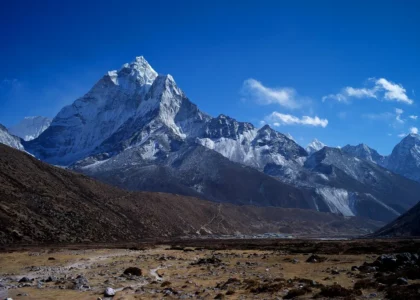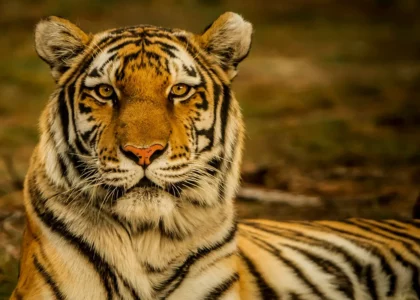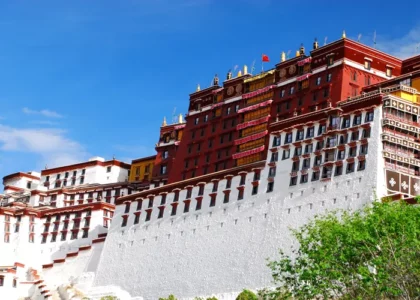Indra Jatra, Yenya the Joyous Festival in Kathmandu
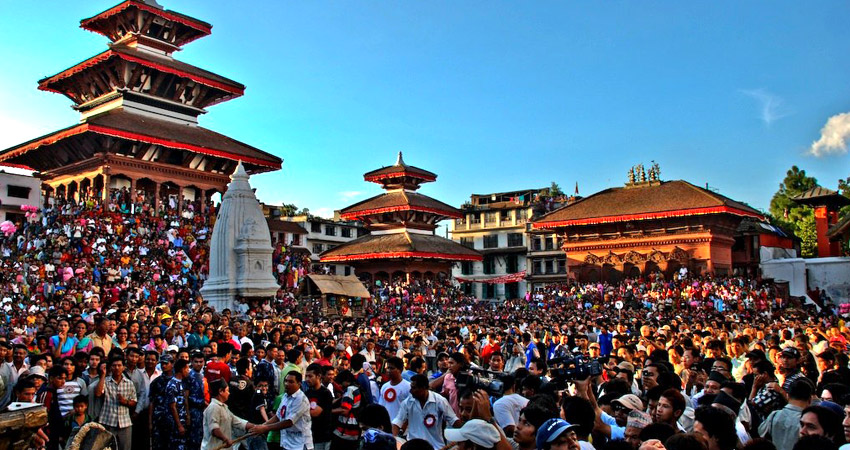
Indra Jatra Festival
Indra Jatra is a significant festival in Nepal, a multiethnic and multicultural country. Every Nepalese citizen celebrates different festivals on various occasions. These festivals differ regionally or according to ethnicity, religion, and traditions. Nepal has many festivals marked differently and carry specific significance behind their celebrations.
From Jatras in the country’s capital to the Chhat in the Terai or national festivals like Dashain, the celebrations are an intrinsic part of Nepalese culture. The Jatras are especially popular in the Kathmandu Valley, the capital city of Nepal, and are celebrated by the Newar community with great joy, enthusiasm, and belief.
However, people from other cities, such as Bhaktapur, Banepa, and Patan, celebrate different types of Jatra with great joy. “Indra Jatra” is a major annual festival celebrated in Nepal, especially in the capital city of Kathmandu. Indra refers to the god of Heaven, while Jatra refers to a Procession. Thus, “Indra Jatra” is a joyous festival and a procession held in honor of the Hindu god Indra.
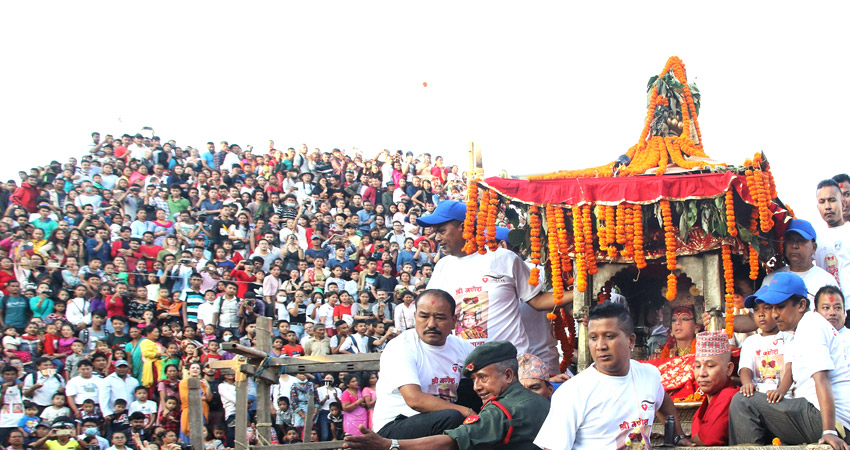
Overview of Indra Jatra
Indra Jatra is the celebration to offer thanks to Lord Indra. Indra means the king of Heaven and the god of the rain, whereas jatra means Procession as the jatra honors Lord Indra, the lord of rain. The devotees especially thank god for the shower. Many other devotees worship ‘Bhairab,’ ‘lord Ganesh,’ and Kumari (the living Goddess). ‘Bhairab’ is the destroyer of the evil lord Ganesh. During ancient times. The Kantipur valley was known ias’Yenya Day,’ and the Newars celebrate the Jatra as ‘Yenya.’ The term’ Indra Jatra’ was given later.
We can still observe some Newars also celebrating the Jatra. ‘Yenya’ or ‘Yenya Punhi’ instead of Indra Jatra. Local people celebrate the festival by lighting up a Diyo called Dalucha. They also worshipped the very same Diyo by offering Samya Baji. During the 10th century, the king Gunakamadeva. The tradition of Indra is starting for the honoring to the establishment of the Kathmandu city. Since 1756AD, the Kumari Jatra has been observed on the same day. Kumari Jatra is also regarded as the Procession of the living Goddess of Nepal.
Main attractions of the Jatra:
Majipa Lakhey, Pulukishi, Sawa Bhaku. Ganesh (Chariot, Bhairava (Chariot), Kumari (Chariot).
Many people perform various dances on the open stages of the city called Dabu. Besides this, sweet Bhairab and other town deities are displayed. During the Jatra period, a pine wooden pole was erected. It can also be observed at Basantapur Durbar Square in front of the old Hanuman Dhoka Palace.
It is also called a pole-raising ceremony. Hundreds of spectators gathered at the Palace Square and surrounding temples to celebrate this ceremony. After that, the chariot of Kumari (the living Goddess) was taken out in a procession and walked through the main streets of Kathmandu.
When Do We Celebrate Indra Jatra?
The Indra Jatra is an annual festival celebrated for eight long days in September. It commences every year from the day of the Bhadra Dwadashi to Krishna Chaturdashi. The festival takes place on September’s twelfth day of the waxing moon. It is celebrated on September 24, 2018, and falls on Thursday, September 12, 2019.
Indra Jatra Celebration
The erection of the Yasin or Linga in Kathmandu Durbar Square (Basantapur) starts the festival.
The pole is believed to represent a similar flag pole given to Lord Indra by God. Vishnu, at Indra Chowk, the Akash Bhairav mash is brought out of the Bhairav temple. It is placed in front of the temple. The Akash Bhairav is worshipped and covered in beautiful flowers, sweets, and other offerings. The name of this event is ‘Yosin Thanegu.’
The Linga is a pole-making pine wood specially brought from the forest near Nala (a small town 29 km east of Kathmandu). During the Lingo (Pole) rising, people, mainly the Newars, gathered wearing masks, sharing local liquors, and performing dances representing gods and demons. In addition, images of other deities, such as Lord Indra, Bhairab, and many others, are also displayed.
The devotees also visit various shrines, holding the light in remembrance of the family members who have passed away. This event is called ‘Pakuranga.’
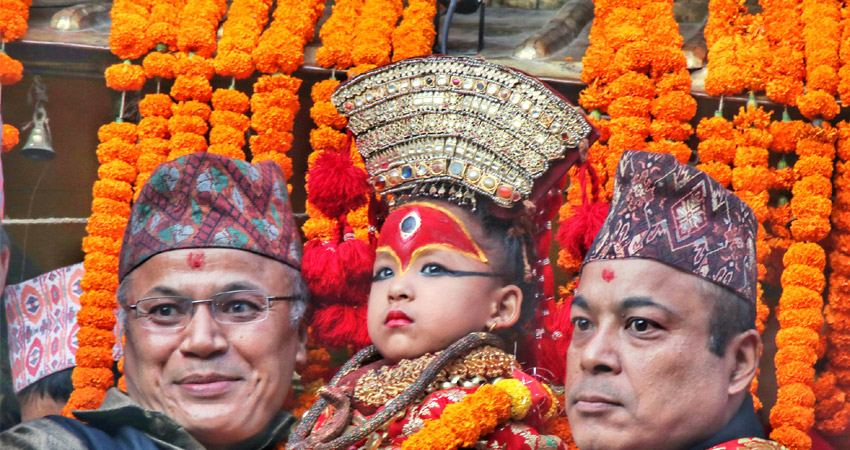
Reason Behind The Celebration Of Indra Jatra
There is an exciting myth behind the evolution of Indra Jatra. Indra’s mother needed Parijat, a type of white flower, to perform a religious ritual. So, disguised as a human being, Lord Indra descends to the earth in search of the herb for his mother. He was accused of flower theft by the meadow’s owner while trying to pick the flower. Then, the field owner kept him in captivity, blaming him for stealing the flowers. Lord Indra is imprisoned in Kathmandu and cannot go back from there.
After missing Son Indra for a long time, his mother Dakini was worried and came to earth to search for him. Luckily, she finally found him and requested the owner of the meadow to let him go. Only after the villagers realized who they were did they agree to free Lord Indra, but they put forward a condition for them.
Based on their condition, Lord Indra should come to the earth every year during that time, and he will be displayed as a prisoner for seven days. Local farmers also make the Dakini promise to provide enough dew during the winter for better productivity. The villagers also ensure that Dakini will take the deceased members of their family to Heaven with her.
This is why the festival of Indra Jatra is celebrated to express gratitude to Lord Indra and Dakini for the decent harvest in the coming year and timely rainfall. Similarly, the festival is also observed in the name of the deceased family members.
Description of Kumari Procession
The Indra Jatra festival is celebrated by taking out the chariot of Goddess Kumari in a procession to thank Indra. During this time, the streets of Kathmandu are full of devotees who perform dances, sing songs, and play various musical instruments like drums and flutes.
We can also see the crowd of street vendors selling different products. To display Lord Indra’s prison condition, the local people in Maru constructed a stage made of wood and viewed the statue of Indra with stretched arms covered by fiber thread. This long-standing tradition has been carried out since the Lichhavi Period. Kumari Jatra started later in the 18th century. The chariot of Goddess Kumari is taken out. The Procession goes all around Kathmandu, following different routes.
Moreover, the other two miniature chariots carrying representatives of Ganesh and Bhairav take different parts of old Kathmandu. The famous Akash Bhairav displays are decorated with beautiful flowers in Indra Chowk. According to legend, this Akash Bhairav’s head is related to the Mahabharat story. At the same time, some others believe it to be the head of the first Kirat King Yalamber.
Different types of people gather in Indra Chowk and sing bhajans and hymns. A variety of dance performances can be observed during Indra Jatra. They perform Sawa Bhakku Bhairav from Halchowk and the Majipa Lakhey from Majipat. The local people in Bhaktur achieve a Devi Nach and Yeravat Jhathi (Pulukisi) from Naradevi, Mahakali, and the Kathi Maka Nach. These types of dances take place around the Hanuman Dhoka area. Every night, the Dasavatar or the ten incarnations of Lord Vishnu.
Here is a brief description of the major day of this festival:
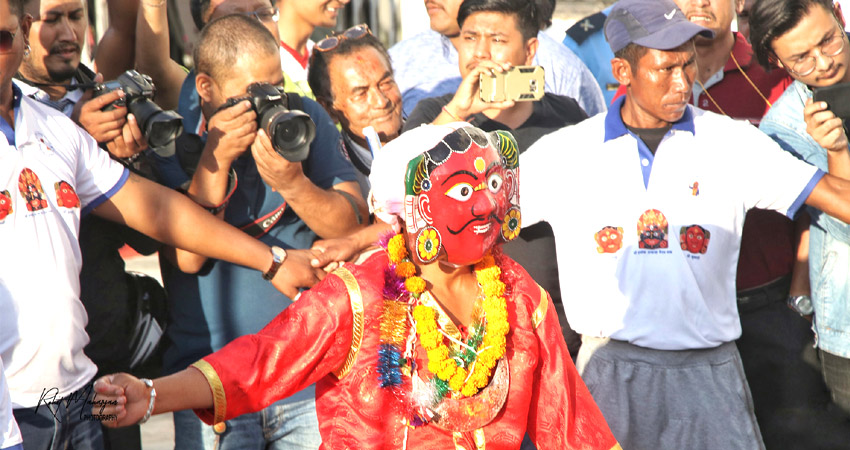
The Newars community celebrates the festival’s first day by offering small oil lamps to remember the family members who died last year. It starts during the reign of Mahendra Malla.
Second Day (Yenya Punhi):
During the festival’s second day, the Linga (Yasingha) is pulled down, signaling the end of the Indra Jatra. It then travels to the converging point of Bagmati and Bishnumati in Teku to be put to rest.
Final Day:
The festival of Indra Jatra concludes with the lowering of the (lingam) pole bearing Indra’s flag amidst religious ceremonies.
The end of the Indra Jatra indicates the beginning of the main festival called Dashain and Tihar. The major festival is celebrated with great enthusiasm throughout the country. The major highlights of the Indra Jatra festival include street dance, popularly known as Lakhey, and pulu, performed by participants wearing the masks of the deities.
Various ritual dances featuring masked demons, gods, and goddesses are performed in different parts of the Valley. The most popular Lakhey dances are also part of the chariot procession and are performed along Kathmandu’s old street.
Lakhey Dance
During this festival, different participants wore masks and danced. Lakhani (mask dancers) were taken to the streets almost every evening, accompanied by loud drums. The festival recalls when Lord Indra descended to the earth seeking the herb.
Mahakali Pykhan
The Mahakali Pykhan is primarily performed at Bhaktapur Durbar Square and on the streets. The major highlight of the Mahakali Pykhan Dance is that it represents the Kyyah, a large, hairy, ape-like creature. The dance performance is full of fun and humor, with a lot of falling.
Sawa Bakhhu Dance
Sawa Bakhhu Dance is another famous dance performance performed by a dance group in Halchowk. The dance starts from the Hanuman Dhoka. It also continues along the festival route and stops at particular junctions. Finally receives an offering from the devotees. The dance depicts the Bhairab (in Blue) with a sword and the other two attendants (in Red).
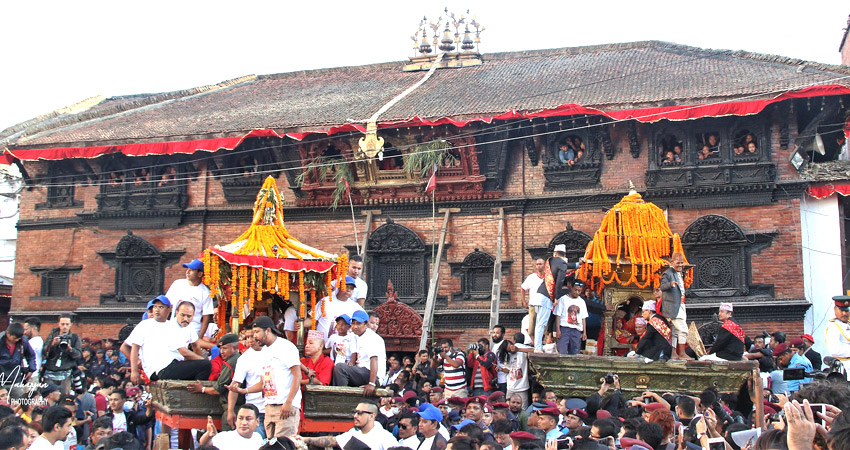
Conclusion:
The shrines and ancient palace buildings lie around Kathmandu Durbar Square. Glow with oil wicks on each night of Indra Jatra. The whole city looks very delightful and colorful. We can see the large image of Akash Bhairab’s head displayed in the open, directly facing his temple at Indra Chowk.
We can observe the enactment portraying the ten earthy incarnations of Lord Vishnu each night on the platform of the temple of the Living Goddess. Many Nepali families will also display idols of Indra or Bahirab this time of year. Nepal’s Hindu and Newari communities celebrate this exciting festival.
Thus, Indra Jatra has a special place in the Nepali calendar. It is one of the biggest street festivals in Nepal, celebrated with a mystic mask, dancing, and pulling the chariot of the living Goddess Kumari. Hence, the festival of Indra Jatra is celebrated in honor of ‘the Lord of Heaven’ Indra.
Best Price Guaranteed, Easy to change Date, Instant Confirmation
Book This Trip Have Questions?
Have Questions?Talk to Expert
Meet Mr. Purushotam Timalsena (Puru), Nepal's best trek and tour organizer, who has been working in the Himalayas for more than 24 years.
WhatsApp/Viber +977 98510 95 800




